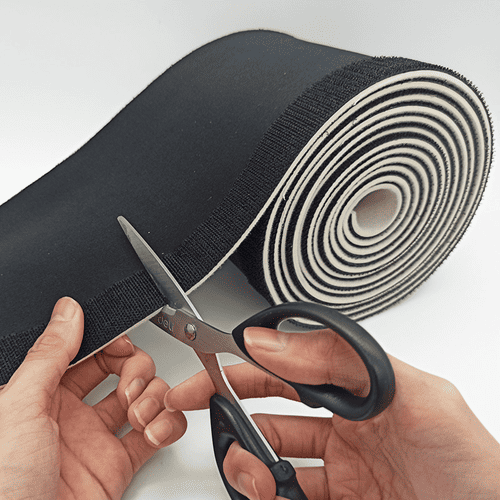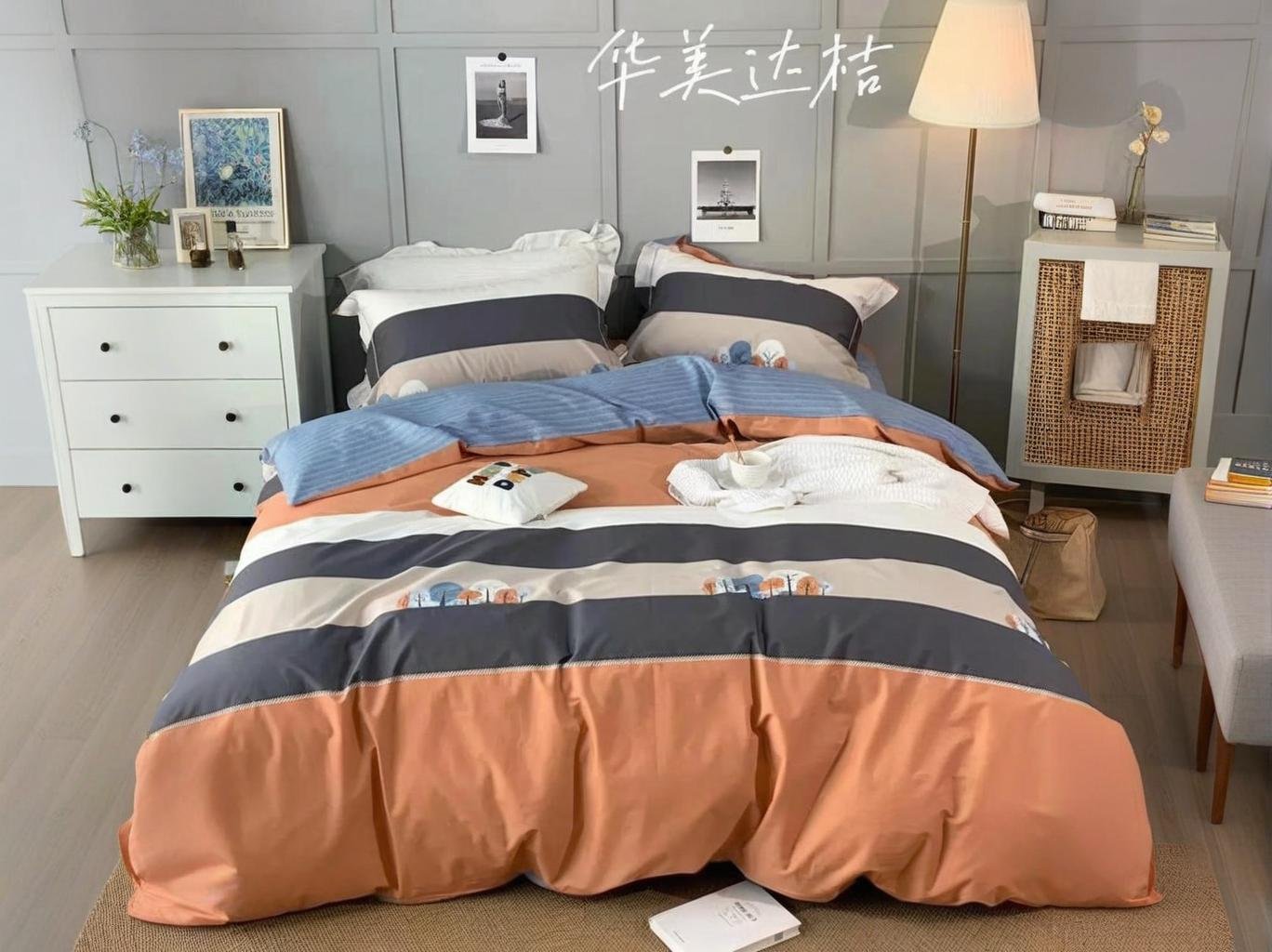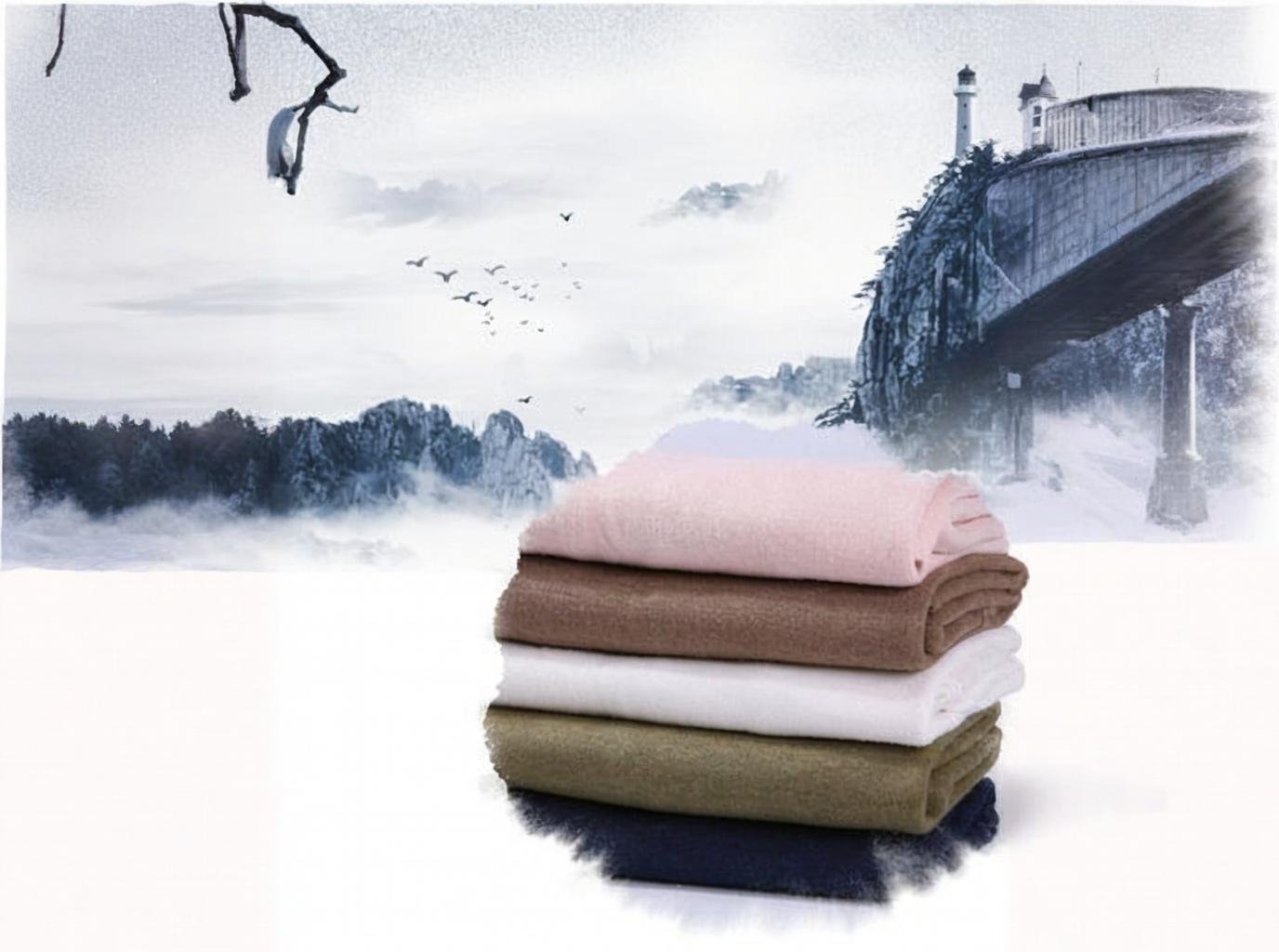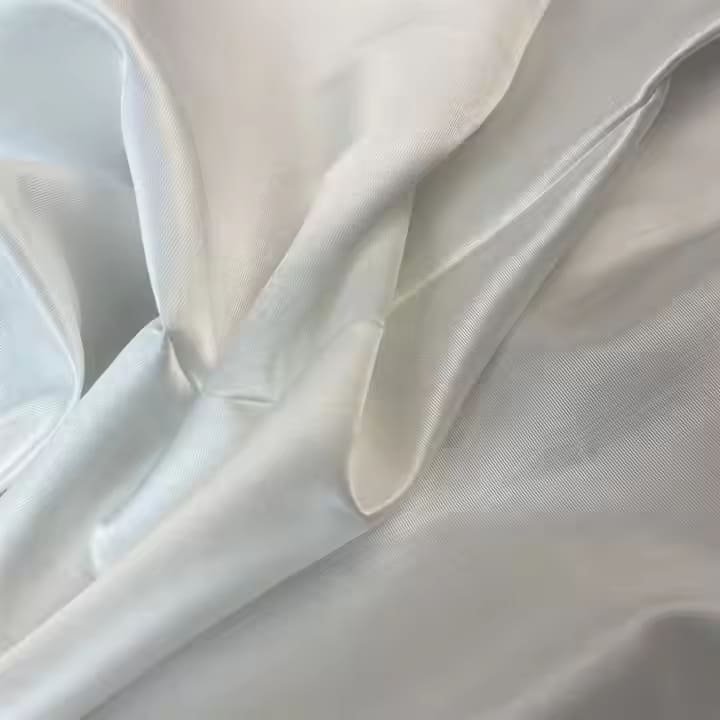Is Neoprene 100% Waterproof?

From wetsuits and laptop sleeves to industrial seals and protective covers, neoprene is everywhere—and often marketed as “waterproof.” But how accurate is this claim? In a market flooded with materials claiming water resistance, it’s essential for B2B buyers, product designers, and manufacturers to separate marketing from materials science.
Neoprene is inherently water-resistant due to its closed-cell structure, but not all neoprene-based products are 100% waterproof, especially under pressure, prolonged exposure, or seam stress. Factors such as foam type, lamination, thickness, and stitching methods all influence its true waterproof performance.
For example, a diving gear manufacturer using standard double-faced neoprene reported increased product returns due to water seepage during deep submersion. After switching to a single-faced neoprene laminated with nylon and switching from stitched to glued seams, the water ingress rate dropped by 85%—proving how much design impacts neoprene’s waterproofing effectiveness.
In this article, we’ll take a critical look at neoprene’s actual waterproof capabilities, how it’s made, where its limits lie, and how to select or customize the right type of neoprene for your application.
1. What Is Neoprene and How Is It Manufactured?
Neoprene is a synthetic rubber made from chloroprene monomers, polymerized into polychloroprene. Its unique combination of flexibility, thermal insulation, chemical resistance, and water resistance makes it popular across both consumer and industrial sectors.
Neoprene’s Composition and Fabrication Process
Closed-Cell vs. Open-Cell Foam
- Closed-cell neoprene traps gas bubbles in sealed pockets, preventing water absorption—ideal for wetsuits, bags, and covers.
- Open-cell neoprene has pores that absorb water, used in some padding and insulation applications where breathability is prioritized.
| Foam Type | Water Absorption | Compression Resistance | Buoyancy | Common Uses |
|---|---|---|---|---|
| Closed-cell | Very Low | High | High | Wetsuits, gloves, straps |
| Open-cell | High | Moderate | Low | Seat cushions, liners |
Production Overview
- Neoprene starts as a raw chloroprene polymer, which is expanded with gases (e.g., nitrogen) to form foam sheets.
- Sheets are cured, laminated (with fabrics like nylon or polyester), and die-cut or roll-cut to size.
- Additional treatments can be applied for UV resistance, flame retardancy, or surface smoothness.
Laminated Neoprene
- Most commercial neoprene is laminated to fabrics for strength, stretch, or printability.
- Common laminates:
- Nylon jersey: durable, flexible, affordable
- Polyester: water-resistant, stiffer
- Super stretch lycra: high mobility for sportswear
- Rubber skin/smoothskin: for hydrophobic surfaces
In industrial gasketing, unlaminated neoprene sheets are used for their full rubber barrier effect, offering up to 99.9% water exclusion in applications like HVAC sealing or underwater robotics.
2. Is Solid Neoprene Material Fully Waterproof?
Solid closed-cell neoprene material is effectively waterproof under normal use. Its cellular structure prevents water penetration, making it impermeable to liquid water. However, “100% waterproof” claims often overlook application-specific variables such as seam design, compression, and exposure time.
What “Waterproof” Really Means in Neoprene Contexts
Definitions Matter
- Waterproof means no water passes through the material under pressure or over time.
- Water-resistant means it repels water to a certain degree but may eventually allow ingress.
Neoprene Waterproof Ratings (by thickness)
| Thickness (mm) | Waterproof Depth (approx.) | Use Case |
|---|---|---|
| 1.5mm | 0–2 meters | Light spray or splash protection |
| 3mm | 5–10 meters | Watersports, kayaking gloves |
| 5mm | 15–20 meters | Diving suits, marine covers |
| 7mm | 25+ meters | Deep sea or high-pressure exposure |
Factors That Can Affect Waterproof Integrity
- Compression: When neoprene is squeezed (e.g., under straps or pressure), it may allow small water ingress at high depths.
- Puncture or Wear: Damage or abrasion can expose cells to leakage.
- Seam Construction: Most leaks occur at seams, not through the neoprene itself.
Lab-Verified Results
- In ASTM D1056-14 water absorption tests, closed-cell neoprene absorbed less than 5% water by weight after 24 hours of full immersion.
- For comparison, polyurethane foam absorbed over 30% in the same test.
A manufacturer producing soft cooler bags switched from open-cell to 5mm closed-cell neoprene with taped seams. Their bags’ water ingress rate dropped from 23% to under 2% during splash and partial submersion testing.
3. How Does Neoprene Resist Water Compared to Other Waterproof Fabrics?
Neoprene performs exceptionally well in terms of water resistance, but it’s important to compare it with other commonly used “waterproof” materials—like TPU-coated polyester, PVC, vinyl, or silicone rubber—to understand where it excels and where it may fall short.
Neoprene vs. Other Waterproofing Materials
Key Comparison Factors:
- Water penetration (hydrostatic pressure resistance)
- Flexibility and compression performance
- UV and chemical resistance
- Reusability and comfort (especially for wearables)
- Seaming method compatibility
| Material | Waterproof Rating | Flexibility | Ideal Use Case | Weakness |
|---|---|---|---|---|
| Neoprene (closed-cell) | Excellent (foam core) | High | Wetsuits, bags, covers | Bulkier, not vapor-sealed |
| TPU-coated polyester | Excellent | Moderate | Dry bags, rainwear, packaging | Prone to abrasion |
| Silicone rubber | Excellent | Medium | Seals, gaskets, lab wear | Expensive |
| Vinyl (PVC) | Good–Very Good | Low | Tarps, aprons, industrial covers | Brittle over time |
| Nylon (coated) | Moderate–Good | High | Outerwear, tents | Requires DWR reproofing |
Why Choose Neoprene?
- Superior insulation: Keeps contents warm or cold while resisting water.
- Highly flexible: Ideal for stretch-fit designs (gloves, pouches).
- Surface resistance: Its smooth laminated face resists light rain or splash, but can be vulnerable to long-term UV exposure if untreated.
When Other Materials Outperform Neoprene
- For ultra-thin waterproof liners, TPU or silicone offers better sealability at reduced thickness.
- In extremely hot environments, silicone rubber or PTFE-coated fabrics maintain stability better than neoprene, which may degrade at 120°C+.
A bicycle bag OEM originally used vinyl-coated polyester for saddle covers but experienced cracking over winter. Switching to 3mm laminated neoprene gave them better cold-weather resilience and improved water-blocking during rain exposure, without cracking or stiffening.
4. Does Neoprene Remain Waterproof Under Pressure or Submersion?
Neoprene’s waterproof performance changes when exposed to external pressure or extended submersion, particularly in deep water or high-load applications. While the base material remains impermeable, performance can degrade when pressure compresses the foam structure, allowing water to breach seams or laminate interfaces.
Underwater and High-Pressure Behavior of Neoprene
Hydrostatic Pressure vs. Neoprene Compression
- At depths beyond 10 meters, water pressure begins to compress closed-cell neoprene, reducing its insulation and resistance to ingress.
- In pressure tests (EN 343 and ISO 811), 5mm neoprene held up to 80–100 kPa before showing micro leakage at seams.
Compression Sets and Water Intrusion
- Repeated use under pressure (e.g., knee pads, shoulder straps) causes compression set—permanent deformation of the foam—which reduces its waterproof reliability.
How Seams Influence Submersion Performance
- Sewn seams (e.g., flatlock) introduce needle holes—these are NOT waterproof.
- Glued and blind-stitched seams, often sealed with liquid tape or heat-welded film, drastically improve waterproofing.
| Seam Type | Waterproof Rating | Best Use Case |
|---|---|---|
| Flatlock stitching | Low | Lightweight wetsuits |
| Blind-stitch + glue | High | Surf suits, marine gear |
| Taped seams (heat sealed) | Very High | Dry bags, diving suits |
Test Report: In a simulated submersion test at 2 atm for 60 minutes, glued 5mm neoprene with taped seams remained dry, while stitched-only neoprene absorbed 8.5% of its volume in water—confirming that seam design matters more than the base material alone.
Design Recommendations for B2B Buyers
- For fully submerged applications, use ≥5mm neoprene + glued or welded seams.
- Use reinforced lamination or apply DWR treatment on outer fabrics to reduce water retention.
- For compression points (e.g., elbow or shoulder pads), select denser neoprene foam grades like CR or SBR-blended neoprene.
5. What Factors Can Compromise Neoprene’s Waterproof Properties?
Although neoprene itself is a water-resistant material, its waterproof performance can be compromised by environmental exposure, physical damage, poor seam construction, or improper storage. Understanding these vulnerabilities helps manufacturers and buyers make informed decisions, especially when neoprene is used in mission-critical or high-moisture environments.
Situations That Diminish Neoprene’s Waterproofing Ability
1. UV and Heat Degradation
- Prolonged exposure to sunlight or high temperatures can cause neoprene to lose elasticity and degrade, especially in non-UV-treated forms.
- Degraded neoprene may crack or delaminate, creating micro-gaps that allow water to penetrate.
| Exposure Type | Result on Neoprene | Waterproof Impact |
|---|---|---|
| UV (sunlight) | Fading, drying, brittleness | Reduced barrier strength |
| High heat (>120°C) | Shrinking, surface blistering | Seam separation risk |
2. Fabric Delamination
- In laminated neoprene (e.g., with nylon or polyester), water ingress can occur between the foam and the laminated fabric layer if adhesive fails.
- This is especially common in poor-quality bonding or after years of repeated flexing.
3. Needle Stitching and Perforations
- Regular sewing techniques pierce the waterproof barrier.
- Every needle hole is a potential leak point unless seam sealing is added.
4. Chemical or Oil Contact
- Exposure to fuels, solvents, or industrial oils can soften or dissolve neoprene surfaces.
- This is particularly relevant for neoprene used in automotive, lab, or chemical processing environments.
5. Repeated Compression
- Constant pressure (e.g., straps, kneeling) flattens the foam cells, making them more likely to wick or trap moisture.
- Once the foam is “crushed,” it loses buoyancy and resistance to water penetration.
Example: A commercial fishing glove maker noticed water penetration after 3 months of use. Lab tests showed that palm areas had 35% reduced thickness and up to 15% water absorption under pressure—despite the material being waterproof when new.
Preventative Measures:
- Use UV-resistant neoprene or apply post-treatment coating
- Choose glue + blind-stitch seams or seamless welded construction
- Avoid exposure to petroleum-based substances
- Regularly inspect and replace parts with compression wear
6. Are All Neoprene Products Equally Waterproof (Foam, Laminated, Coated)?
Not all neoprene products provide the same level of water resistance. Waterproofing depends on the type of neoprene, the lamination or coating used, and how the final product is constructed. While the base neoprene foam may be closed-cell and waterproof, surface layers and manufacturing methods can alter its actual performance.
Types of Neoprene and Their Real-World Waterproof Ratings
1. Plain (Unlaminated) Closed-Cell Neoprene
- Often used in gaskets, sealing strips, and insulation panels.
- Provides excellent waterproofing due to uniform rubber structure and no textile interference.
2. Laminated Neoprene (with Nylon, Lycra, or Polyester)
- Found in most apparel, bags, or fitness accessories.
- Water resistance depends on:
- Foam density
- Lamination quality
- Seam treatment
| Laminate Type | Waterproof Rating | Flexibility | Use Case |
|---|---|---|---|
| Nylon (double face) | Good | High | Wetsuits, gloves, bags |
| Lycra (super stretch) | Fair | Very High | Sportswear, medical wear |
| Polyester-coated | Very Good | Moderate | Industrial gear, covers |
3. Smoothskin or Rubber-Skin Neoprene
- Features a thin rubber-like outer skin with high water repellency.
- Used in diving hoods, triathlon wetsuits, and marine products.
- Must be paired with sealed seams to remain truly waterproof.
4. Neoprene with PU Coating or Film
- Added for extra abrasion resistance and water-blocking.
- Improves surface tension, but can reduce flexibility if too thick.
| Type | Water Absorption | Best Use Scenario |
|---|---|---|
| Unlaminated CR Neoprene | <2% | Gaskets, marine pads |
| Nylon-Laminated SBR Neoprene | \~3–5% | Fitness, casual protective gear |
| PU-Coated Neoprene | <1% | Soft coolers, boat covers |
A laptop sleeve brand upgraded from 3mm SBR neoprene laminated with generic polyester to CR neoprene with a rubber-skin finish and fully bonded seams. Customer complaints about water ingress dropped by over 90% within two quarters.
Summary of Differences:
- SBR neoprene is lower cost and moderately waterproof
- CR neoprene offers better water and temperature resistance
- Construction (lamination + seaming) determines whether a product using waterproof material is actually waterproof in use
7. How Do You Test or Measure the Waterproof Rating of Neoprene?
To validate whether a neoprene product is waterproof—not just water-resistant—B2B buyers and manufacturers often rely on laboratory testing protocols that simulate hydrostatic pressure, moisture absorption, and environmental stress. Testing ensures that the neoprene meets performance standards suitable for wetsuits, industrial seals, bags, or protective covers.
Common Testing Methods for Waterproof Neoprene
1. Hydrostatic Pressure Test (ISO 811 / EN 20811)
- Measures how much pressure a fabric or laminated neoprene can withstand before water penetrates through.
- Rating is given in millimeters of water column (e.g., 10,000mm = excellent waterproofing).
| Thickness | Typical Rating | Application |
|---|---|---|
| 3mm | 4,000–6,000mm | General water-resistant gear |
| 5mm | 8,000–12,000mm | Diving suits, marine wear |
| 7mm | 15,000mm+ | High-pressure or deep-sea usage |
2. Water Absorption Test (ASTM D1056)
- Immerses neoprene in water for 24 hours and measures percentage of water absorbed by weight.
- Ideal materials absorb <5% to be considered highly waterproof.
3. Seam Leak and Pressure Testing
- Used for finished products like dry bags or suits.
- Pressurizes the item with air or water to detect seam leaks or structural failure.
4. Accelerated Aging Tests
- Neoprene is exposed to UV, heat, and chemicals to simulate real-world wear.
- Ensures waterproof integrity doesn’t degrade over time.
Always ask your supplier for lab test results or request custom testing on sample lots—especially if your application involves underwater use or prolonged exposure to moisture.
8. What Should B2B Buyers Consider When Choosing Waterproof Neoprene Materials?
Choosing the right neoprene goes far beyond just picking a thickness. Buyers must consider the blend composition, lamination type, seam method, environmental exposure, and final product structure to ensure true waterproof performance.
Practical Considerations for Sourcing Waterproof Neoprene
1. Know Your Application
- Will the material be fully submerged or only exposed to splashes?
- Is flexibility or durability the priority?
| Use Case | Recommended Spec |
|---|---|
| Laptop sleeves | 3mm CR neoprene + water-resistant lamination |
| Diving wetsuits | 5–7mm CR neoprene + blind-stitched seams |
| Boat or engine covers | 5mm neoprene + PU-coated outer shell |
| Industrial pads/seals | Solid CR neoprene, unlaminated, 50+ shore A |
2. Choose the Right Type of Neoprene
- SBR neoprene is suitable for budget and casual-use items.
- CR (chloroprene rubber) offers superior performance in heat, water, and pressure.
3. Lamination & Coating Matter
- Nylon-laminated neoprene provides strength but needs seam sealing.
- Rubber-skin or PU coating adds a water barrier but may reduce stretch.
4. Ask About Fabric Backing and Seam Finishing
- Request details on stitching type: flatlock = water leakage; blind-stitch or welded = waterproof.
- Taped seams or glue bonding improves waterproof integrity.
A Scandinavian outdoor gear company worked with SzoneierFabrics to develop a 5mm CR neoprene with a smoothskin outer layer, glued blind-stitch seams, and anti-UV treatment. The end product passed ISO 811 water pressure tests at over 12,000mm and was used successfully in cold-water diving suits sold across Europe.
Is Neoprene 100% Waterproof?
The short answer: Yes, neoprene can be 100% waterproof—when the right type, thickness, lamination, and seam techniques are used. The raw closed-cell foam is inherently waterproof, but the finished product’s construction determines whether it performs as promised under real-world conditions.
B2B buyers must evaluate not just the neoprene itself, but the entire design system, including how it’s laminated, cut, assembled, and finished.
Looking to Source Customized Waterproof Neoprene Materials?
At SzoneierFabrics, we specialize in custom neoprene development for protective gear, marine equipment, bags, sportswear, and more.
Why B2B Clients Choose SzoneierFabrics:
- ✅ CR and SBR neoprene in various densities and finishes
- ✅ Laminated, coated, and reinforced neoprene options
- ✅ Expert guidance on seam sealing, bonding, and testing
- ✅ Free design support, fast sampling, and low MOQs
- ✅ ISO-certified, REACH-compliant, globally shipped
Let us help you build a 100% waterproof product from the material up.
Can't find the answers?
No worries, please contact us and we will answer all the questions you have during the whole process of bag customization.
Make A Sample First?
If you have your own artwork, logo design files, or just an idea,please provide details about your project requirements, including preferred fabric, color, and customization options,we’re excited to assist you in bringing your bespoke bag designs to life through our sample production process.



